Chia seeds are becoming increasingly common because of their functional and nutritional properties. However, there are a few things to consider before adding these, nutrient-packed, seeds to your baby's diet. Read on to find out the benefits of chia seeds, how to prepare them and serving suggestions.
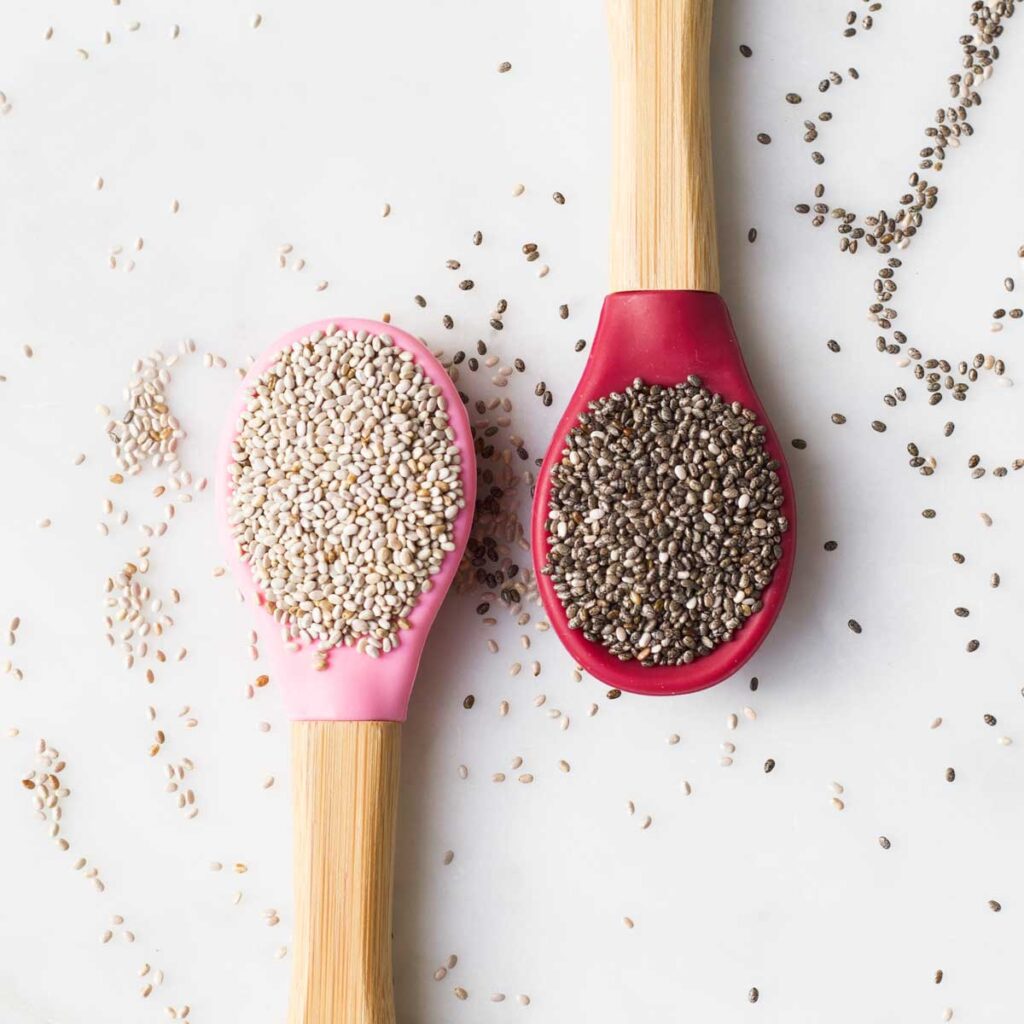
Benefits of Chia Seeds
Chia seeds may be tiny but they are packed with nutrition. They are rich in
- omega 3 fatty acids - for growth and development
- fibre - keeps the digestive system healthy
- calcium - for healthy bones
- zinc - for immune function
- phosphorus - contributes to bone health and tissue maintenance.
- manganese - essential for metabolism, growth, and development
Chia seeds are a complete source of protein (contain all nine essential amino acids). They are naturally gluten-free.
How Much Chia Seeds Can my Baby / Toddler Have
There are no official recommendations on daily intake. However, chia seeds are packed full of fibre and because of this, you should introduce them slowly. Consuming too many in one sitting may cause abdominal discomfort.
In addition, too much fibre isn’t advised for children under 2. This is because they can become full quite quickly before they’ve had enough calories and other nutrients.
From what I have read, I'd recommend starting with ½ tsp a day and observing closely.
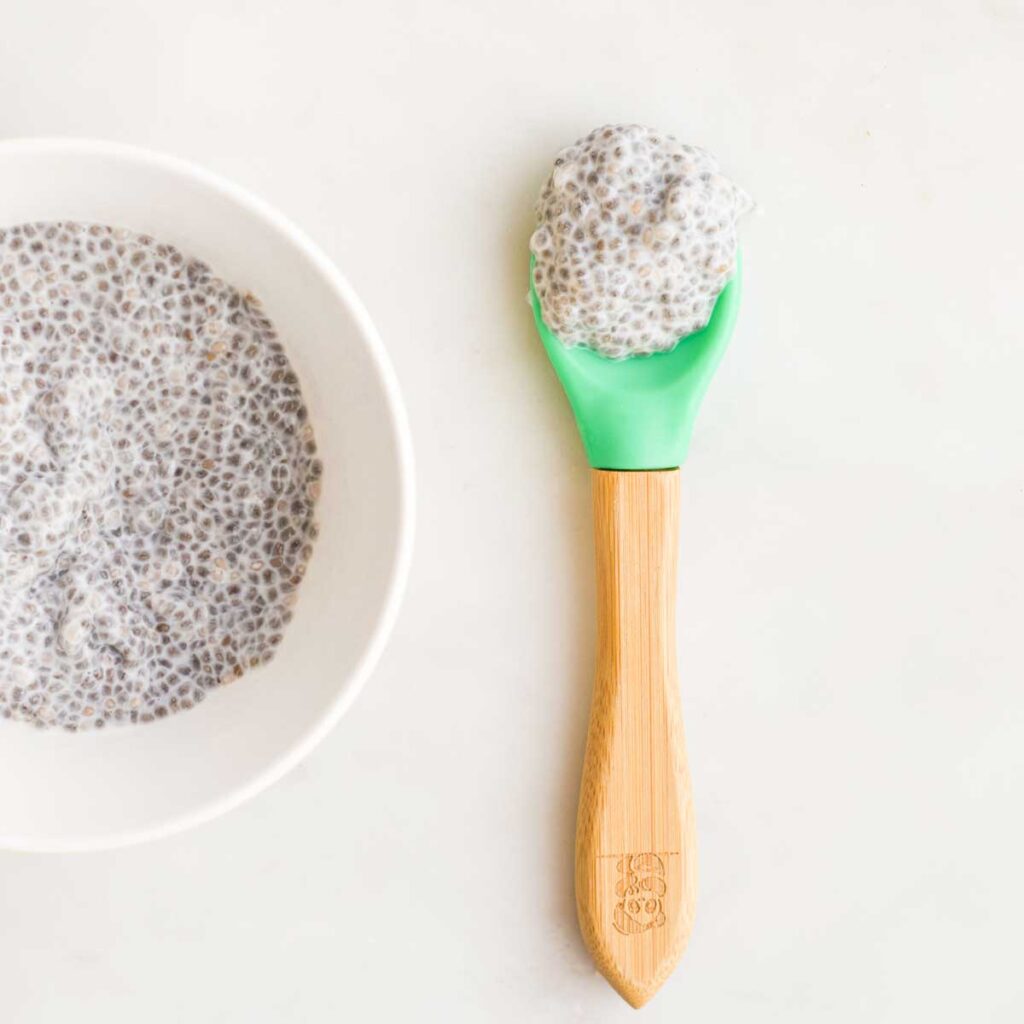
How to Prepare Chia Seeds for a baby/toddler.
Chia seeds should ONLY be served to babies / children once they have been soaked in liquid (e.g water, milk) and left to fully expand.
Chia seeds absorb a large amount of liquid, if you feed your baby dry chia seeds, they will absorb water post-ingestion and could potentially cause a gastrointestinal blockage.
Always let chia seeds expand fully in some kind of liquid and ensure to break down any clumps of seeds that may have formed before serving.
If you want a smoother gel/pudding then you can grind before soaking or blend the soaked mixture.
Serving Suggestions
Chia seeds can be incorporated into many meals due to their bland taste and lack of smell.
Why not try adding some to
- oatmeal
- yogurt
- soups
- sauces
- smoothies
You can also use them to make delicious desserts such as banana chia pudding.
Due to their ability to absorb water, to form a gel, they can also be used to thicken sauces, used as an egg replacement, or to make sugar-free chia jam.
Just be prepared for the mess.... the seeds stick to everything!
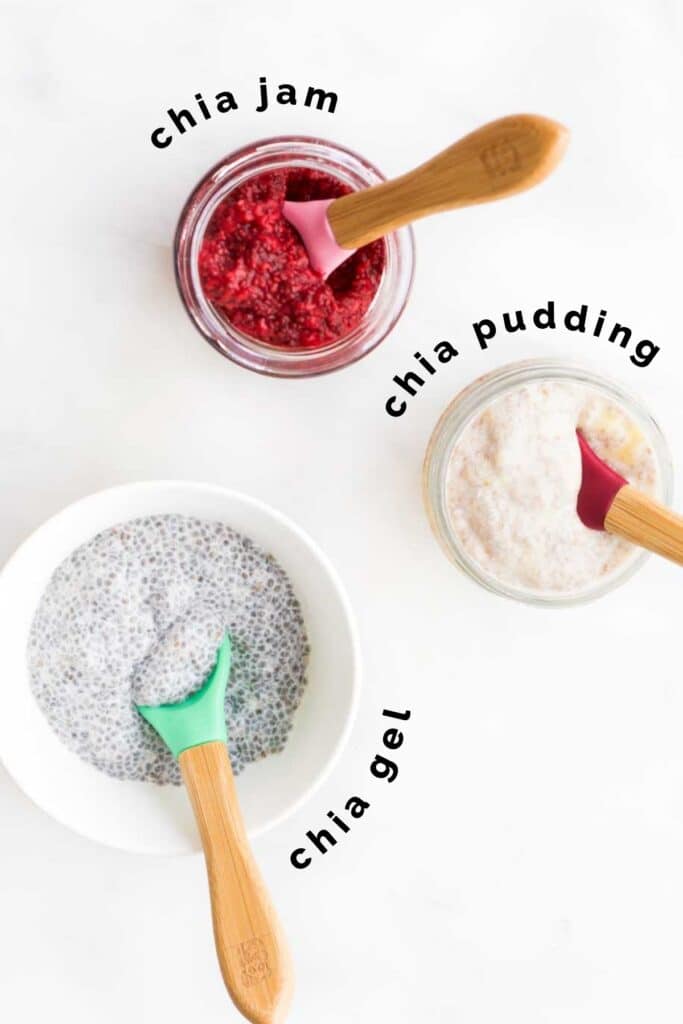
Frequently Asked Questions
Chia seeds may be introduced 6 months +. However, there are a few things to consider. Please read the notes above about how to prepare them and how much to offer.
Chia seeds are not a common source of choking. However, if your child has dysphagia (feeding and swallowing problems) you should consult your feeding specialist before serving them.
Chia seed allergies are rare but have been documented. There is potential cross-reactivity between chia and other seeds such as sesame, meaning that some people allergic to certain seeds will also react to chia.
Nutritionally, there is no difference between black or white chia seeds.
Chia seeds used to be a niche ingredient, available only at healthy stores. However, they are a lot more mainstream now, and you should be able to find them in most well-stocked grocery stores.
Chia seeds have a long shelf life and will keep for several years when stored in a cool, dry place.
You can refrigerate the hydrated seeds in an airtight container for up to 3 days (depending on liquid/milk used)
Summary
- Despite their tiny size, chia seeds are highly nutritious. They’re loaded with fiber, protein, omega-3 fatty acids, and various minerals.
- Always allow chia seeds to soak and fully expand in liquid before serving a baby. Never feed dry chia seeds.
- As with all new foods, start by serving a small quantity of the pre-soaked seeds and observe closely.
- Chia seeds are tasteless and can be added to a range of sweet and savoury foods.
- Prepare for the mess, soaked chia seeds cling to everything!
Looking for more healthy kid recipes?Sign up for my free recipe newsletter to get new family friendly recipes in your inbox each week! Find me sharing more kid-friendly inspiration on Pinterest and Instagram.
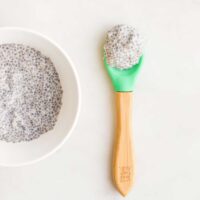
Chia Seed Gel
Ingredients
- ¼ cup (60ml) Milk / Water Can use breast milk, formula, cows milk, unsweetened plant based milk (such as soy, oat, almond, coconut)
- 1 tablespoon (9g) Chia Seeds Black or white
Instructions
- Add the milk and seeds to a small mixing bowl and mix well.
- After a couple of minutes, give the mixture another good mix to ensure any clumps of chia seeds, that may have formed, are properly broken down.
- Refrigerate and allow the seeds to sit in the liquid until the seeds have absorbed the liquid and a gel is formed, around 30 mins.
Video
Recipe Notes
Nutritional facts
Disclaimer: This guide is for informational purposes only. It is not intended to replace the personalised care and advice given to you by a health professional. You should never disregard professional medical advice or delay in seeking it because of something you have read or seen here. Please refer to our full disclaimer for more info.
References / Further Reading
- Harvard T.F. Chan School of Public Health. The Nutrition Source: Chia Seeds. (website). Accessed April 10, 2021
- Healthline, Chia Seeds 101: Nutrition Facts and Health Benefits. (website) Accessed April 10, 2021
- Anaphylaxis Campaign, Emerging Allergens. (website) Accessed April 10, 2021
- Albunni, BA., Wessels, H., Paschke-Kratzin, A., Fischer, M. (2019). Antibody Cross-Reactivity between Proteins of Chia Seed ( Salvia hispanica L.) and Other Food Allergens. Journal of Agricultural and Food Chemistry, 67(26), 7475-7484.
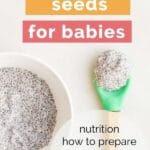
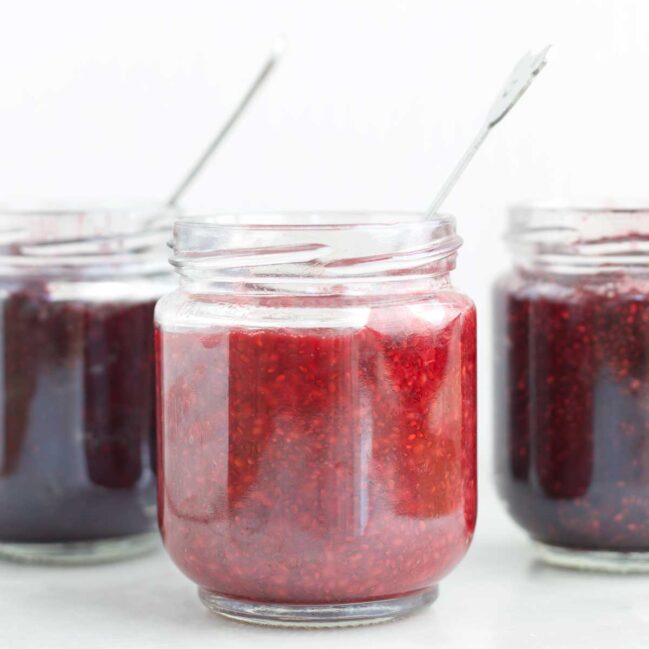
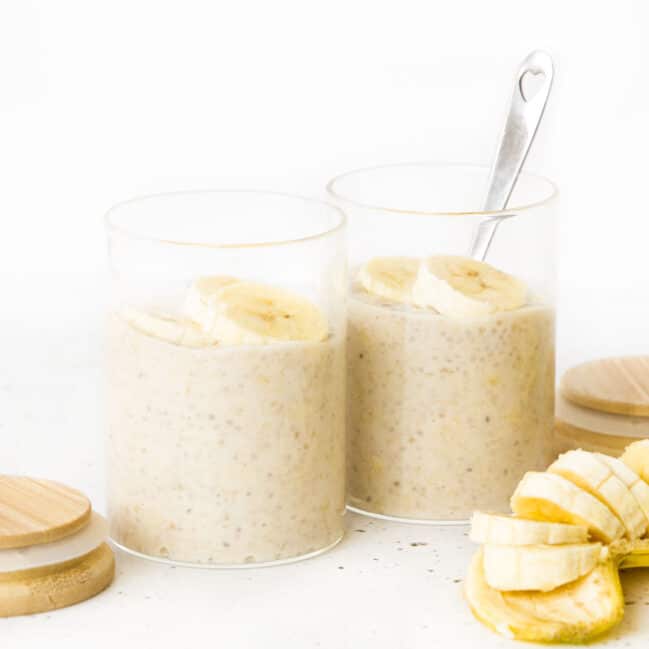
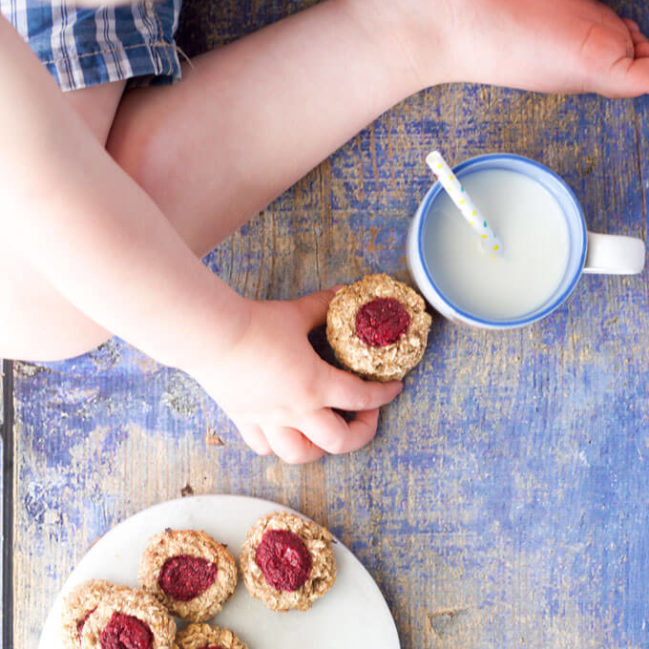
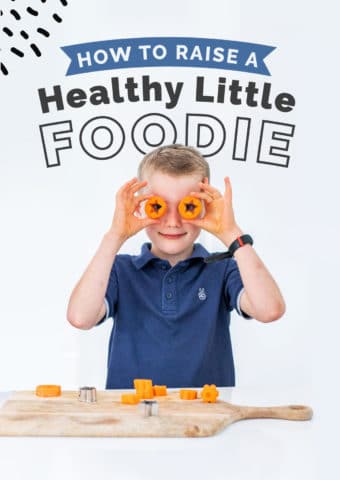
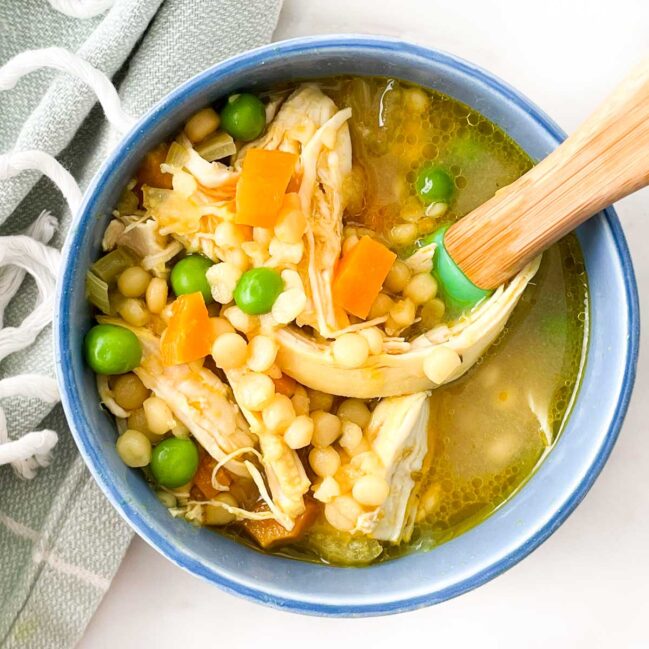
Taylor says
Can I add chia to a homemade baby purée and freeze it?
Amy says
Hi Taylor, yes you can freeze purees with chia seeds. If making for a baby I would be mindful of how much chia you add and would only add a very small amount.
Elissa says
How long would it last for refrigerated?
Amy says
I'd store it for up to two days refrigerated. 🙂